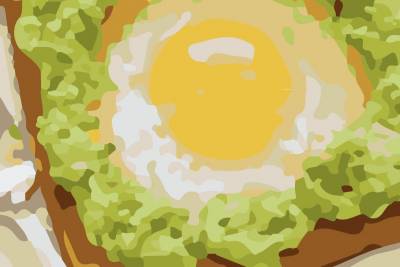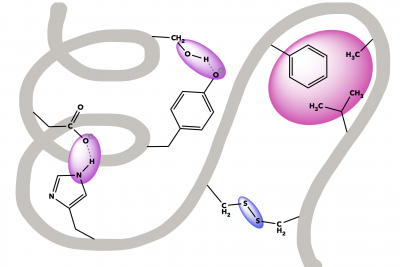Show the Fermentation of Food
Below are some ways you can show examples of fermentation in laboratory settings and through more open-ended demonstrations. When you like what you find, check out the full version for relevant background, full protocols, discussion questions, visuals, downloadables, and more. Adapt these materials for your context, and please reach out with suggestions and ideas!
Try with your students...
Demonstrating Live Organisms In Fermented Foods
Background
Fermented foods receive their tangy flavors, shelf stability, and possibly even health benefits from the active presence of “good” bacteria and/or yeast. Use this assay to demonstrate how fermented foods are teaming with bustling communities of microbes.
Materials
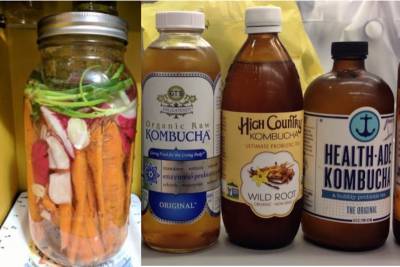
Corner Store: Grocery Items
- Purchase (and/or make) various fermented foods, e.g.
- fermented pickles (NOT vinegar pickles, those are different)
- kombucha
- yogurt
- kimchi
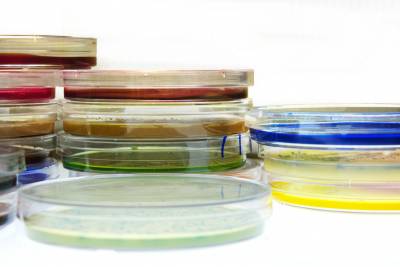
Laboratory Items
- Pre-poured agar plates (can be ordered online)
OR make your own using
- Petri dishes
- Agar powder
- Nutrient media (e.g. tryptic soy, LB, or bacto)
- OPTIONAL some of the fermentation medium (e.g. sweet tea for kombucha cultures)
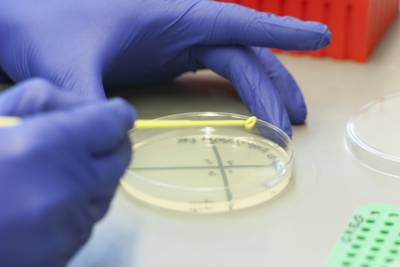
More Laboratory Items (Household substitutes in parentheses)
- Sterile pipette (straw, turkey baster, or medicine syringe)
- Sterile swabs or spreaders (cotton swabs from an unopened package)
- Test tubes or plastic tubes (skip if not available)
- Flame or bunsen burner (candle)
- Hot water bath or heat block (pan of boiling water)
- Sharpie marker
- Gloves (optional)
Procedure
Be sure to use aseptic technique, described in more detail below, while conducting all aspects of this preparation. Pre-made agar plates can be purchased from a variety of vendors, or made on your own (see recipe below).
- Collect the number of agar plates you will need, and label each with a sharpie marker to include your initials, date, ferment being plated, and the phrase “DO NOT OPEN”.
- Set up 2 tubes per ferment you plan on testing, and label each tube accordingly.
- Tube A will be prepared at room temperature.
- Tube B will be boiled before plating.
- For each ferment being tested, transfer approximately 1ml of fermentation liquid to Tube A, and 1ml of ferment liquid to Tube B.
- Each time you go to transfer materials from the source to a tube, or from tube to tube, be sure that the transferring instrument is sanitized each time, or use a new sterile transfer pipette.
- Keep set A tubes on the countertop. Boil sample set B for 10 minutes by placing the tubes in boiling water or a heat block set to 100 °C.
- by boiling the ferment, you are presumably killing all of the microbes present.
- Pour the liquid in each tube onto the correspondingly labeled agar plate.
- Spread the liquid culture evenly around the agar plate using a sterile swab or cotton swab.
- Return the lid to the agar plate, and allow the liquid to dry.
- Turn the plate upside down (so that the agar side is up) and leave on the countertop to grow for 1-4 days.
- Record observations, room temperature, and other factors that may be relevant.
- At the end of the growth period, compare the difference between Tube Set A (unboiled) and Tube Set B (boiled).
Do you notice a difference between the unboiled and boiled ferments after plating?
Measuring the Change in pH During Lacto-Fermentation
Materials

Common Items
- Water

Corner Store: Grocery Items
- Choose one or more fermentable veggies, e.g.
- Cucumber
- Cabbage
- Carrots
- Peppers
- Beets
- Green Beans
- Salt (culinary preference is Grey Celtic Sea Salt, but any table salt will work)
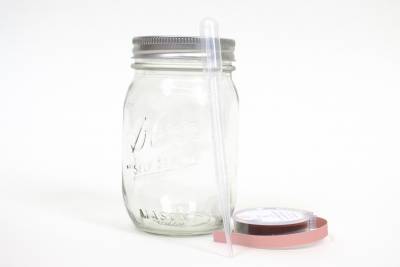
Corner Store: Kitchen Items
- Jar with Lid
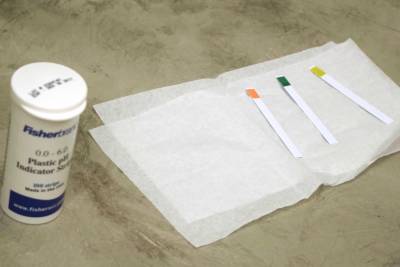
Laboratory Items (Kitchen substitutes in parentheses)
- Sterile Dropper (straw, turkey baster, or medicine syringe)
- Triple Beam Balance or Digital Scale (teaspoon measure)
- pH Paper (can be ordered online)
Procedure
- Turn your sterilized jar on its side. Start loading vegetable spears into the jar, being sure that the length of vegetable pieces is shorter than the height of your jar
- Add approximately 20g of celtic sea salt (salt volumes vary, but if you cannot measure by weight: 5 tsp celtic sea salt, 5 tsp table salt, 6 1/4 tsp kosher salt) per pint of pickling volume (scale this if your jar volume is significantly different)
- Fill the jar to the very top with water.
- Cap it with the sanitized lid, and swish the liquid around a bit to mix the salt in.
- Remove the lid, and take a small drop of liquid out (using sterile dropper) and transfer to a pH strip. Record pH — this is time zero. Return lid.
- Continue measuring and recording pH using sterile dropper on a daily basis to understand how pH changes during the lacto-fermentation process.
- At the end of 2 weeks, the vegetables should be nice and crispy and ready to eat!
Testing Substrate Specificity in Yeast Fermentation
Materials

Corner Store: Grocery Items
- Various sugars (try health food stores or online for the widest selection)
- Dextrose (glucose), Galactose, Lactose, Maltose, Sucrose (table sugar)
- Baker’s Yeast Packets or a jar
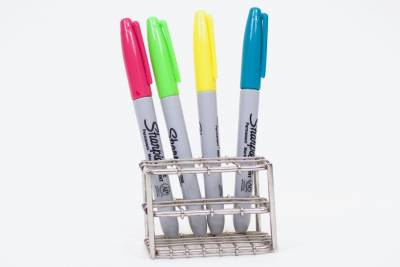
Common Items
- Water
- Markers
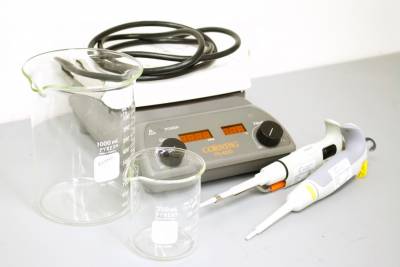
Laboratory Equipment
- Water bath, hot plate, or pan & stove
- Beakers or flat-bottomed bowl/baking dish
- Timer
- Micropipettes & tips, sterile transfer pipettes (or straws or medicine syringe)
- 15mL Conical Tubes and a needle OR test tubes and glass slides to cover
Procedure
- Fill 15ml conical tube with 8ml of a sugar solution
- Mix the 7% yeast solution to be a uniform suspension. Fill the remainder of the tube (~7ml) with yeast solution such that the meniscus rises above the lip of the tube.
- Replace cap onto tube — because of holes, there will be a small squirt of solution to come out.
- NOTE: make sure that there are no sizeable air bubbles in the tube
- Invert the tube, and place in a large beaker filled with water (preheated to 40 °C). Place this beaker into a water bath or onto a hot plate to maintain temperature
- NOTE: you can also test the effect of temperature on fermentation by adjusting temperature of water bath or hot plate
- Immediately mark the bottom of the CO2 bubble (if there is one). Mark this point at 5 minute intervals for 30 minutes.
- At the end of the experiment, record the level of CO2 produced at each time interval by emptying the tube, filling with water to the mark, and pouring the water into a graduated cylinder or onto a balance for accurate measurement
What conclusions can you draw about the metabolism efficiency of different substrates by S. cerevisiae?
Experiment with Fermentation using Kombucha
Materials
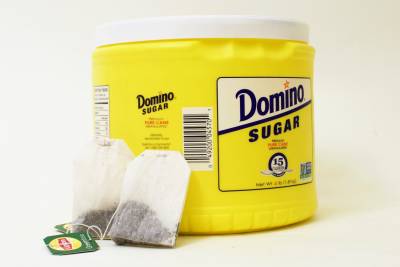
Corner Store: Grocery Items
- Green or Black Tea Bags
- Table Sugar (Sucrose)
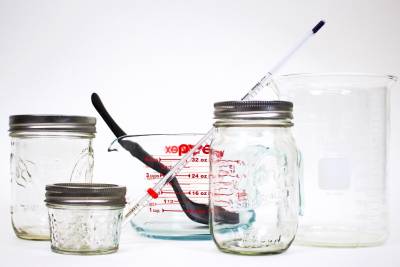
Corner Store: Kitchen Items
- Spoons
- Jars (with loose covers)
- 1L measuring cup or beaker
- Thermometer
- Hot Plate or Tea Kettle
- Triple Beam Balance, Digital Scale, or Measuring Cup
- Sanitizing Equipment (Dishwasher or Bleach or Starsan)
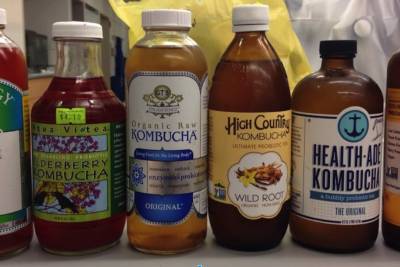
Corner Store: Specialty Item
- Kombucha starter culture, which can come from any of the following:
- Order a culture from an online site e.g. Etsy.com
- Get a culture from a friend (email RockEDU 😉)
- Use the last inch of a store-bought bottle that you like
Preparing the liquid media
- Clean and ideally sanitize equipment (e.g. dishwasher or chemical sanitizer—bleach, StarSan, etc.)
- Brewing Container: 1 L container e.g. pyrex beaker, wide mouth ball jar, or measuring cup
- Spoons (2; one for sugar, one for stirring tea)
- Thermometer
- Storage Container (size depends on how much broth will be left over e.g. the difference between the volume of your storage jars and 1 L; container should seal with a lid)
- Heat 1 L water to boiling (e.g. use an electric kettle, pot on the stove, or beaker on a hot plate)
- Pour ~850 ml of water into the Brewing Container. Let cool to 170F.
- Add 3 bags of green (or black) tea (~6g tea) and let steep for 10 minutes.
- Tug on bags 10 times to disperse the brewed tea. Discard tea bags.
- Add 150 g sucrose (table sugar; ¾ C) and stir until dissolved.
- Bring the water up to 1 L with the excess boiled water.
- Cool to room temperature (in a fridge (~30 min), freezer (keep a close eye on it), or on the counter overnight)
- Label the brewed tea/sugar mixture, and use to start your kombucha culture.
- Note: this is a good stopping point as the sugar-tea can be stored for several weeks in a sealed container if good sanitation was followed.
What experimental question do you have in terms of how something might affect the production and composition of kombucha?
How will you test this?
Yeast Fermentation Inquiry
Materials
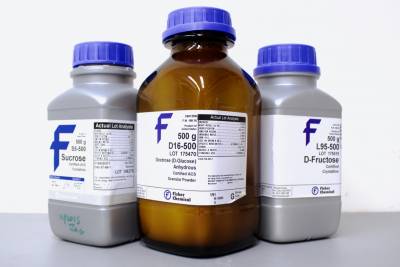
Chemicals
- Baker’s Yeast
- Various Sugars (e.g. sucrose, glucose, fructose, lactose, maltose, etc.)
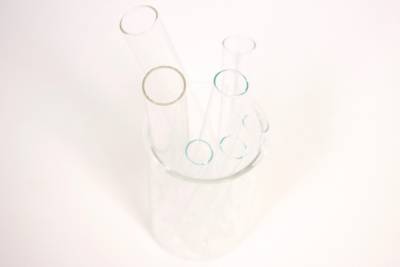
Gas-Collection Setup
- Tubes or vials (e.g. 15 ml conical tubes, glass test tubes, or gas-collection vials)
- Markers
- Container wider than the tubes or vials to hold a bath of water
- Water

Equipment
- Water bath or hot plate to vary temperature
- Timers
- Something to move consistent volumes of liquids (Micropipettes and tips, glass pipets and bulbs, straws if need be, etc.)
Setup
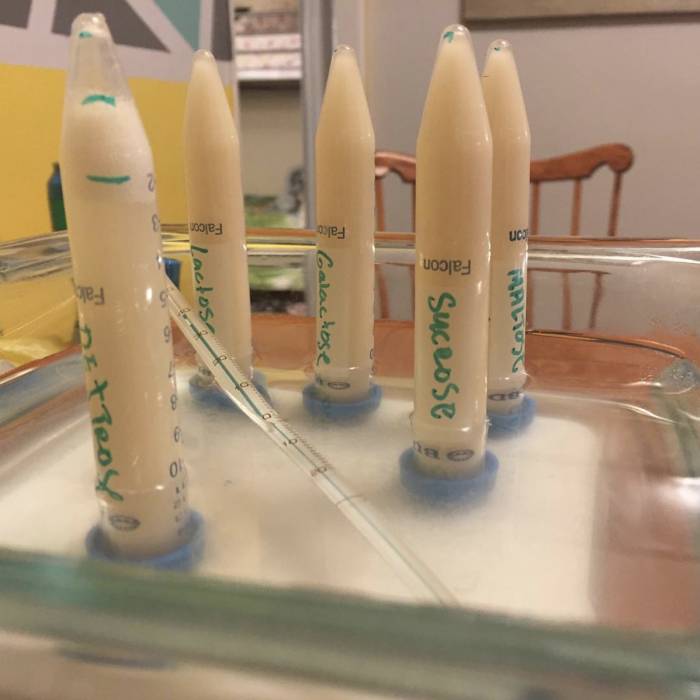 Set up your tubes and water bath in such a way that the gas produced in each fermentation will rise to the tops of the tubes and volumes of gas can be marked with a permanent marker or waxed pencil.
Set up your tubes and water bath in such a way that the gas produced in each fermentation will rise to the tops of the tubes and volumes of gas can be marked with a permanent marker or waxed pencil.
In the example at right, plastic tubes were used with a few holes poked into each plastic cap. The tubes were filled with yeast solution and food source (e.g. glucose), covered, and inverted quickly into the water bath. The samples should be held inside the tubes and displaced into the water bath as gas is produced.
A similar setup can be used with test tubes and stoppers with holes or using a glass slide to invert each tube into the bath before sliding off the slide and allowing the fermentation gas produced to displace the yeast solution. You may also be able to use a typical gas collection apparatus from a chemistry laboratory at your school.
Finally, volumes of gas can be determined by emptying a marked tube and filling it with water exactly to the mark. Then that water can be poured into a graduated cylinder of appropriate size to determine the volume of gas produced.
Guiding the Inquiry
Think about how you can design an experiment to test this question, keeping in mind the inclusion of an appropriate control. Remember, a simple design makes for elegant results.
Write out your procedure, step by step to test your experimental question. Create a proper data table to easily record and share your results. Was your hypothesis supported by the data? Why or why not?



